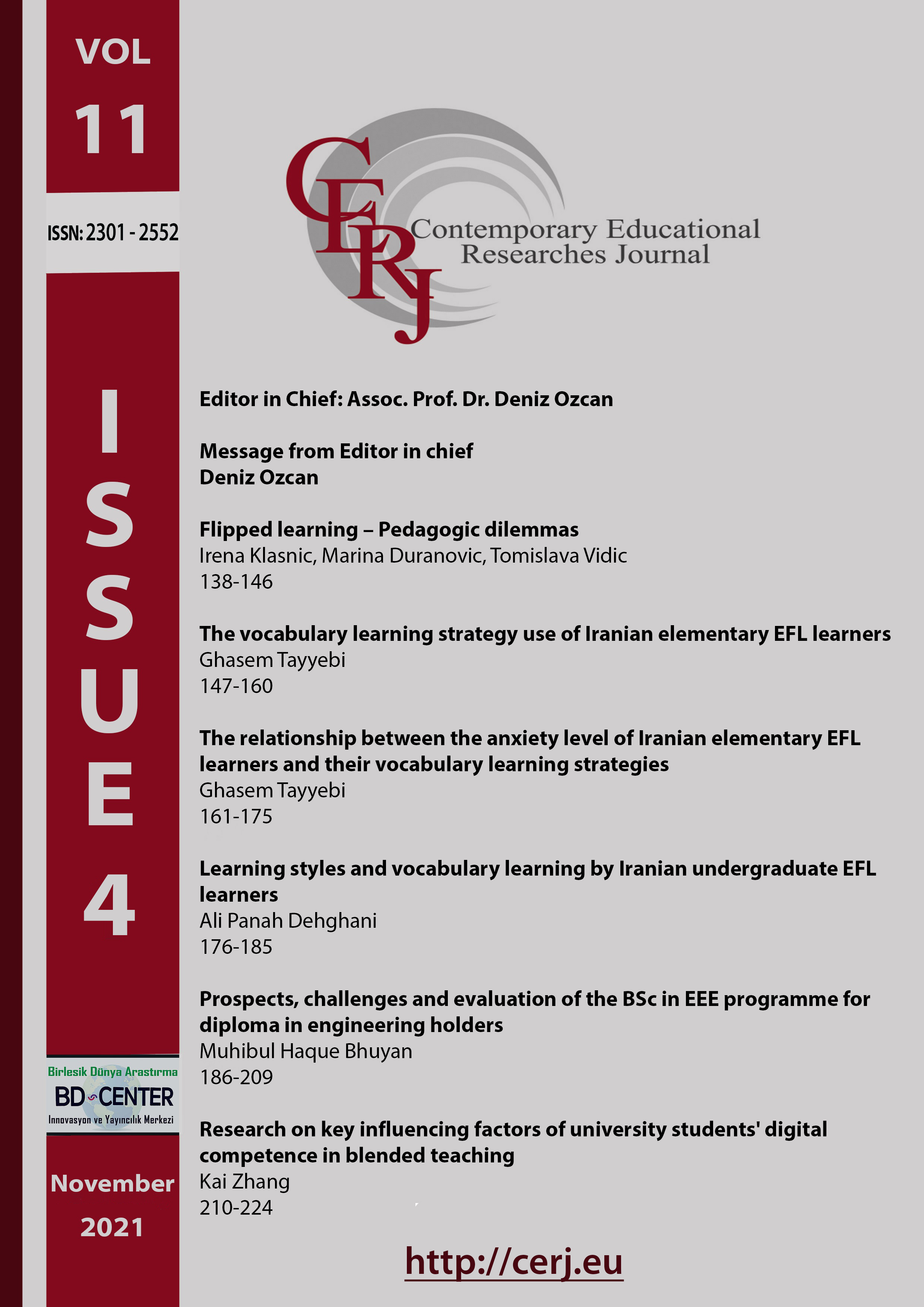Flipped learning – Pedagogic dilemmas
Main Article Content
Abstract
Scientific and practical examinations of pedagogues, educators and teachers are directed to finding the approach, methods and strategies which would motivate students and make them more active in the learning process. One of the ways to achieve this is flipped learning. This article aims to describe some characteristics of flipped learning, and also questions the pedagogic foundation, justification and limits of the usage possibilities and the potential challenges in the implementation of this model into the educational system. The research reports findings based on the trends in flipped learning. By replacing activities carried out in the classroom and at home, students are put into a new situation. A student independently realises the initial contact with the teaching content at home, whereas in the classroom, the activities (with the teacher and other students) that provide understanding and application of the learned are implemented.
Keywords: Education, flipped learning, students, teacher, pedagogic.
Downloads
Article Details

This work is licensed under a Creative Commons Attribution 4.0 International License.
Authors who publish with this journal agree to the following terms:
- Authors retain copyright and grant the journal right of first publication with the work simultaneously licensed under a Creative Commons Attribution License that allows others to share the work with an acknowledgement of the work's authorship and initial publication in this journal.
- Authors are able to enter into separate, additional contractual arrangements for the non-exclusive distribution of the journal's published version of the work (e.g., post it to an institutional repository or publish it in a book), with an acknowledgement of its initial publication in this journal.
- Authors are permitted and encouraged to post their work online (e.g., in institutional repositories or on their website) prior to and during the submission process, as it can lead to productive exchanges, as well as earlier and greater citation of published work (See The Effect of Open Access).
